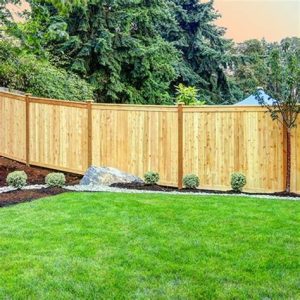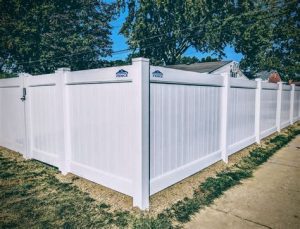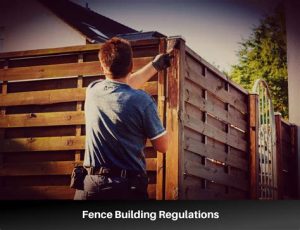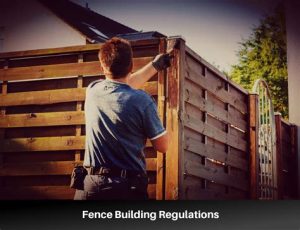Discover essential tips for choosing the right fence type, preparing for installation, selecting winter materials, optimizing techniques, and ensuring proper maintenance this season.As the winter months approach, many homeowners may underestimate the perfect time for fence installation. However, with the right strategies, winter can actually be an advantageous season for enhancing your property’s boundaries. From choosing the right fence type to preparing the ground for effective installation, this blog post will guide you through the essential steps to ensure your winter fence installation is a success. We’ll cover how to select the best materials that withstand cold weather, optimize your installation techniques for efficiency, and ensure proper maintenance during the winter months. Whether you’re looking to bolster security, enhance privacy, or simply add curb appeal, these top tips will help you navigate the challenges and opportunities that come with winter fence installation.
Choosing the Right Fence Type
When it comes to winter fence installation, choosing the right fence type is crucial for ensuring durability and functionality. The snow, ice, and harsh winds of winter can impact certain materials more than others, so understanding your options is key.
- Wood Fencing: Offers a classic look but requires regular maintenance to prevent rot and warping in winter conditions.
- Vinyl Fencing: Highly durable and resistant to the elements, making it a low-maintenance option for winter.
- Metal Fencing: Options like aluminum or wrought iron are strong and can withstand the harshest conditions without deteriorating.
- Chain Link Fencing: While not as aesthetically pleasing, it’s highly functional and requires minimal upkeep.
- Composite Fencing: Combines plastic and wood fibers for a robust option that resists fading and warping.
In addition to material selection, consider the style and height of the fence. A taller fence may offer better protection against winter winds and snow accumulation. Also, think about how the fence will blend with your landscape and home architecture, ensuring it contributes positively to curb appeal, even in winter.
Ultimately, the right fence type will vary based on your specific needs, budget, and local climate conditions.
Preparing the Ground for Installation
Getting ready for a winter fence installation requires careful preparation, especially when it comes to the ground where the fence will be erected. Properly preparing the ground ensures that your fence remains stable and secure throughout the winter months.
- Clear the Area: Begin by removing any debris, rocks, or vegetation that could interfere with the installation. A clean area will help ensure a firm and level foundation for your fence.
- Check the Soil Quality: Assess the soil type on your property. Different soil types will require different preparation techniques. For instance, sandy soil drains quickly but may need reinforcement for stability.
- Digging Holes: If you are installing posts, make sure to dig the holes deep enough to provide stability. A rule of thumb is to dig holes that are at least one-third of the total length of the post.
- Level the Ground: Ensure that the ground is as level as possible. Uneven ground can lead to an unstable fence and may affect its appearance.
- Post Placement: Mark the locations for your fence posts accurately. Use stakes or markers to outline where each post will go, allowing for consistent spacing.
Overall, taking the time to properly prepare the ground for your winter fence installation can save you trouble later. It also ensures that your fence will withstand the harsh winter conditions, preventing any costly repairs or replacements.
Remember, the success of your fence installation hinges significantly on the groundwork you lay. Investing effort in this stage not only enhances the durability of the fence but also contributes to its overall aesthetic appeal.
So, before you set out to install your fence this winter, make sure you are fully equipped with these preparation tips. They are vital to achieving a beautiful and robust fencing solution that lasts for seasons to come.
Selecting the Best Materials for Winter
When it comes to installing a fence during winter, selecting the right materials is crucial to ensure durability and functionality. The cold weather can be tough on various building materials, making it essential to choose options that can withstand harsh conditions.
1. Vinyl Fencing is an excellent choice for winter installations. It is both weather-resistant and low maintenance, meaning it won’t warp or crack in freezing temperatures. Additionally, vinyl does not require painting, allowing it to maintain its aesthetic appeal even under a blanket of snow.
2. Aluminum Fencing is another fine material choice. This lightweight yet robust option is resistant to rust and corrosion, making it ideal for snowy climates. Aluminum fences also provide a sleek, modern aesthetic that complements many properties.
3. Pressure-Treated Wood can also be suitable, provided it’s properly treated to resist moisture and pests. While wood may not be as durable as vinyl or aluminum, it can still perform well during winter if correctly maintained and installed.
Consider conducting an assessment of your local weather conditions and your fencing needs before selecting materials for your winter fence installation. Properly researching and investing in the best materials can help you avoid future repairs and ensure a sturdy, reliable fence throughout the cold season.
Optimizing Installation Techniques
When it comes to winter fence installation, optimizing your installation techniques is crucial for ensuring durability and effectiveness against harsh weather conditions. One of the first steps is to choose a proper installation layout that accounts for potential snow drifts and ice accumulation. This layout will aid in preventing damage to the fence over time.
Another important factor is the timing of installation. Ideally, you should choose a day when the temperature is above freezing to allow for better handling of materials like concrete or wood. If the ground is frozen, using a post hole auger with additional heating technology could help penetrate the tough surface.
Furthermore, employing the right tools and techniques can greatly enhance the accuracy of your fence installation. Utilizing a level and string line may help ensure that your panels and posts are uniformly aligned, which will not only improve aesthetics but also the overall strength of the fence against winter elements.
By investing time in planning and utilizing effective techniques, you can ensure that your winter fence installation is executed with precision, setting up your fence for long-term success.
Ensuring Proper Maintenance for Winter
As winter approaches, ensuring your fence remains in good condition is crucial. Proper maintenance not only extends the lifespan of your fence but also ensures it remains functional and aesthetically pleasing throughout the cold months.
Regular Inspections: Conduct regular inspections of your fence before and during winter. Look for any signs of damage, such as loose boards, cracked posts, or rusted hardware. Addressing these issues early can prevent further deterioration.
Cleaning: Before winter sets in, give your fence a thorough cleaning. Remove dirt, debris, and any mold or mildew that may have accumulated. This will help in preserving the finish of your fence and prevent any health hazards associated with mold.
Weatherproofing: Depending on the type of materials used in your fence, applying a weatherproof sealant can add an extra layer of protection against cold temperatures and moisture. For wooden fences, this is particularly important to prevent warping and splitting.
Snow Management: If heavy snowfall is common in your area, be mindful not to pile snow against the fence. This added pressure can cause structural issues over time. Instead, use a snow shovel to clear the area around your fence regularly.
By adhering to these maintenance tips, you can help ensure your fence withstands the harsh winter conditions, ultimately preserving its integrity and appearance.
Frequently Asked Questions
What are the best times of year for winter fence installation?
While winter may seem unideal, late fall or early winter can be a good time for fence installation as the ground is often frozen, making digging easier.
How do cold temperatures affect the materials used for fencing?
Cold temperatures can cause materials like wood to contract, which may affect their stability. It’s essential to select materials that are resistant to extreme weather conditions.
What preparations should be made before installing a fence in winter?
Before installation, ensure that the ground is accessible and clear of snow or ice. It’s also essential to check the local regulations regarding fence installation during winter months.
Are there specific types of fences better suited for winter installations?
Vinyl and metal fences are often more suitable for winter installations as they are more resistant to cold weather compared to wood, which can warp or crack.
What tools are necessary for preserving efficiency during winter fence installation?
It’s important to have proper tools like insulation cups for post holes, a heavy-duty shovel, and a snow removal tool. Rakes and tarps can also be helpful for clearing the area.
Can winter installation affect the longevity of the fence?
If installed correctly, a fence can be as durable in winter as in other seasons. However, improper installation in frozen ground can lead to issues later, so follow best practices.
What safety measures should be taken during winter fence installation?
Ensure proper footwear to prevent slipping on ice, work in teams to manage heavy materials, and take breaks to avoid fatigue and frostbite. Always have a first-aid kit nearby.





